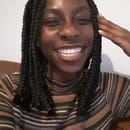The world is comprised of so many different races, cultures, body types, sexualities etc. but there isn’t nearly enough representation in the media to showcase them.
In the United States, when you look at billboards, tv shows, advertisements you name it: there are primarily white people on them. Now, the media is slowly starting to integrate other faces into these platforms.
Childhood Representations
Photo by Susan Holt Simpson on Unsplash
How many dolls did you have with similar hair like yours or shared facial features that were remotely similar to yours? If you’re a minority, that answer is probably going to be not that many.
It’s like the creators of our favorite dolls and action figures had no idea that they could incorporate different hair colors, skin colors or sizes into their work. Sure people will still buy the toys because that’s all the companies have to offer, but not having this representation early on in childhood can have a negative impact on children’s perceptions of themselves.
Companies like Barbie saw that this was an issue and began to incorporate different doll colors and sizes into their market. Black doll companies started to create dolls that showcased black natural hairstyles to teach young black children to love their hair.
People like Sydney Satalino and Shelley Mason are stepping up and creating dolls that have prosthetic limbs and Down syndrome and other traits that aren’t typically showcased in toys. Any toy that makes a child feel like they are being seen in the world is so important!
Models in the Media
Photo by Melody Jacob on Unsplash
It’s no secret that the fashion industry can be incredibly prejudiced. Models are conventionally shown as thin and Caucasian, but thankfully this idea is changing.
Over the past couple of years, the modeling industry has progressively integrated models of different body types and skin colors. Although the transition is not smooth for certain races, especially when it comes to stylists dealing with different hair types, at least the industry is stepping in the right direction.
Models like Winnie Harlow and Amy Deanna are taking over the industry because they embrace their vitiligo in an industry where multicolored skin has not been seen, and this has lead Harlow to become the first vitiligo model on Sports illustrated and Deanna to become the first CoverGirl model with vitiligo.
Different body types have also started taking over the modeling industry by storm. For instance, Iskra Lawrence has become the face of the #AerieREAL role model campaign with her curves defying the typical slender model physique. Her body type allows for other curvy women to feel like they are beautiful and accepted.
Without these kinds of body representation in the media, people who do not have the “society standard body type” would not think that they are valued in the media.
LGBTQ+
Photo by Florentine Pautet on Unsplash
This cannot be stressed enough: Not everyone is straight, not everyone defines themselves as being a man or a woman and not everyone fits into a categorized box.
The United States does not have the best sexual education in the world, and even talking about heterosexual sex is taboo which makes it difficult to integrate different sexual identities in the media. As of 2016, only 24 states in the US teach about sexual education.
Many people don’t understand characteristics of the LGBTQ+ community because they aren’t informed about it or exposed to it through different forms of media, so imagine how hard it is for people in the LGBTQ+ community to learn everything on their own.
This is why it is so important to have representation shown in the media.
Through movies like “3 Generations” and “Dallas Buyers Club,” they show transgender characters, but the biggest issue with them is that the people who portray them are not transgender.
How can someone who is transgender fully relate to a character on TV who is not transgender? Laverne Cox and Elliot Fletcher are real people who are transgender. These are the people who should be representing the trans community.
Some channels, like FX Networks, are breaking this barrier with shows like “Pose.” “Pose” is an accurate representation of the trans community and features the largest transgender cast of any TV show–ever.
These actors understand what it means to be transgender because they experience it every day. This is something that no cisgendered actor will be able to fully embody.
Not Your Racial Stereotype
Photo by Javier Reyes on Unsplash
Having that one minority character on a TV screen that plays into that races stereotype is not representation. “South Park” even tries to make fun of this by having an all-white cartoon cast with one black child who is named “Token” because he is the “token black” character of the show. It’s great to have a character who looks like you on screen, but they shouldn’t have to follow a stereotype to be written into the script.
Asian characters should not have to play a character who is “good at math” to be on TV, and black characters should not have to portray the “angry, black woman” to be on screen. Races should be able to play characters without having to live up to how the media portrays them.
Another major issue about minorities and marginalized groups in the media is that they are given supporting roles majority of the time. In the 2017-2018, only 28% of minority actors had lead character roles in new tv shows.
Minority actors are just as talented as other actors, but many of them are not able to show their talents because the media industry can’t look past their skin tone.
Through movies like “Black Panther” and “Crazy Rich Asians,” the box offices showed what happens when minorities are correctly portrayed in media and given lead roles. Spoiler alert: It breaks box office history. It’s like people want to see minorities in roles for longer than 10 minutes. What a concept.
There are so many more examples of why representation matters, but it would take up at least 100 pages. Without representation what is the point of media? It’s great to see people on screen, but no one wants to see the same blonde-haired, clear-skinned, blue-eyed girl on their timeline or television screen. They want to see people who look like them, so that they have someone to look up to. Come on Hollywood, all we want is representation.



